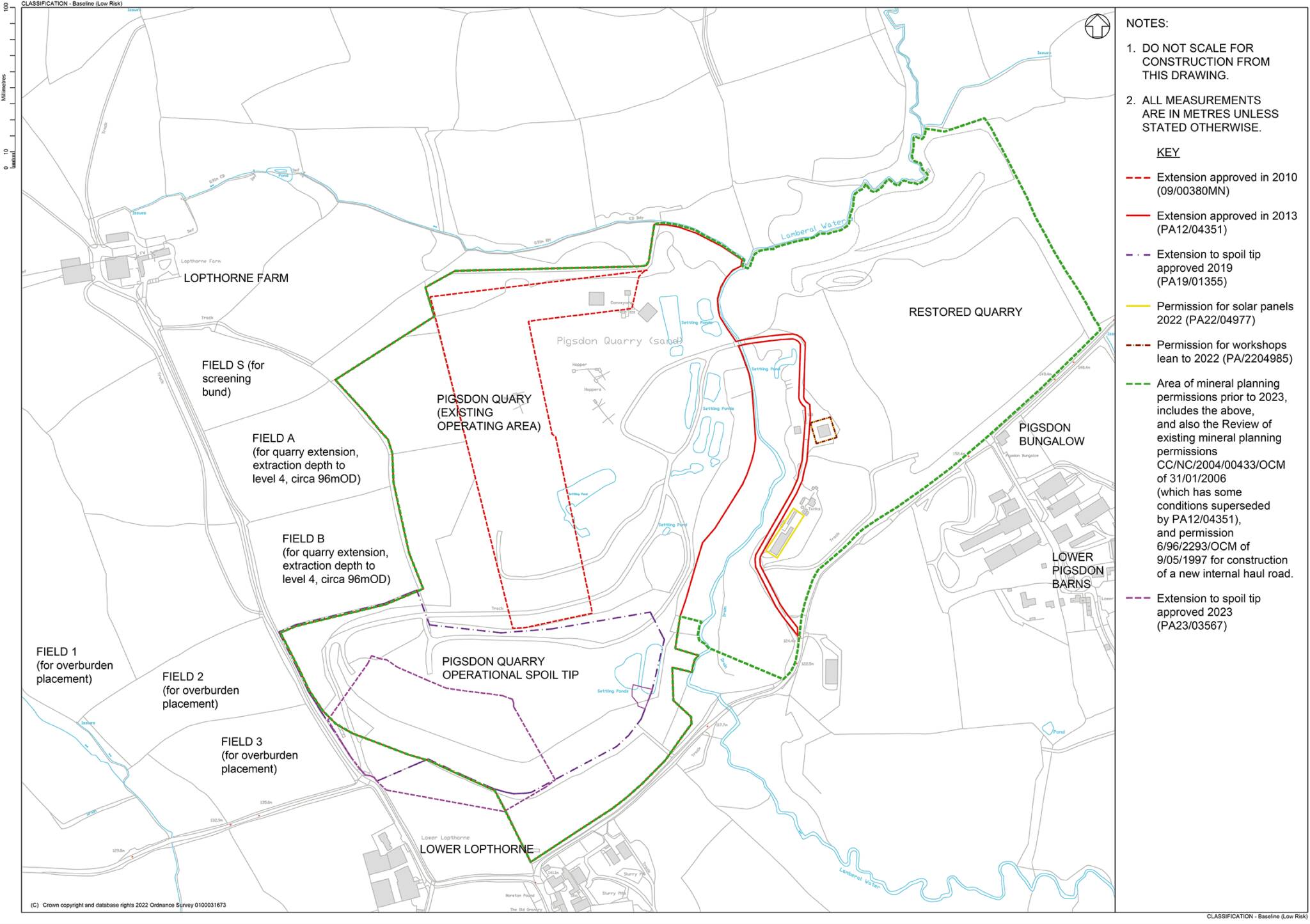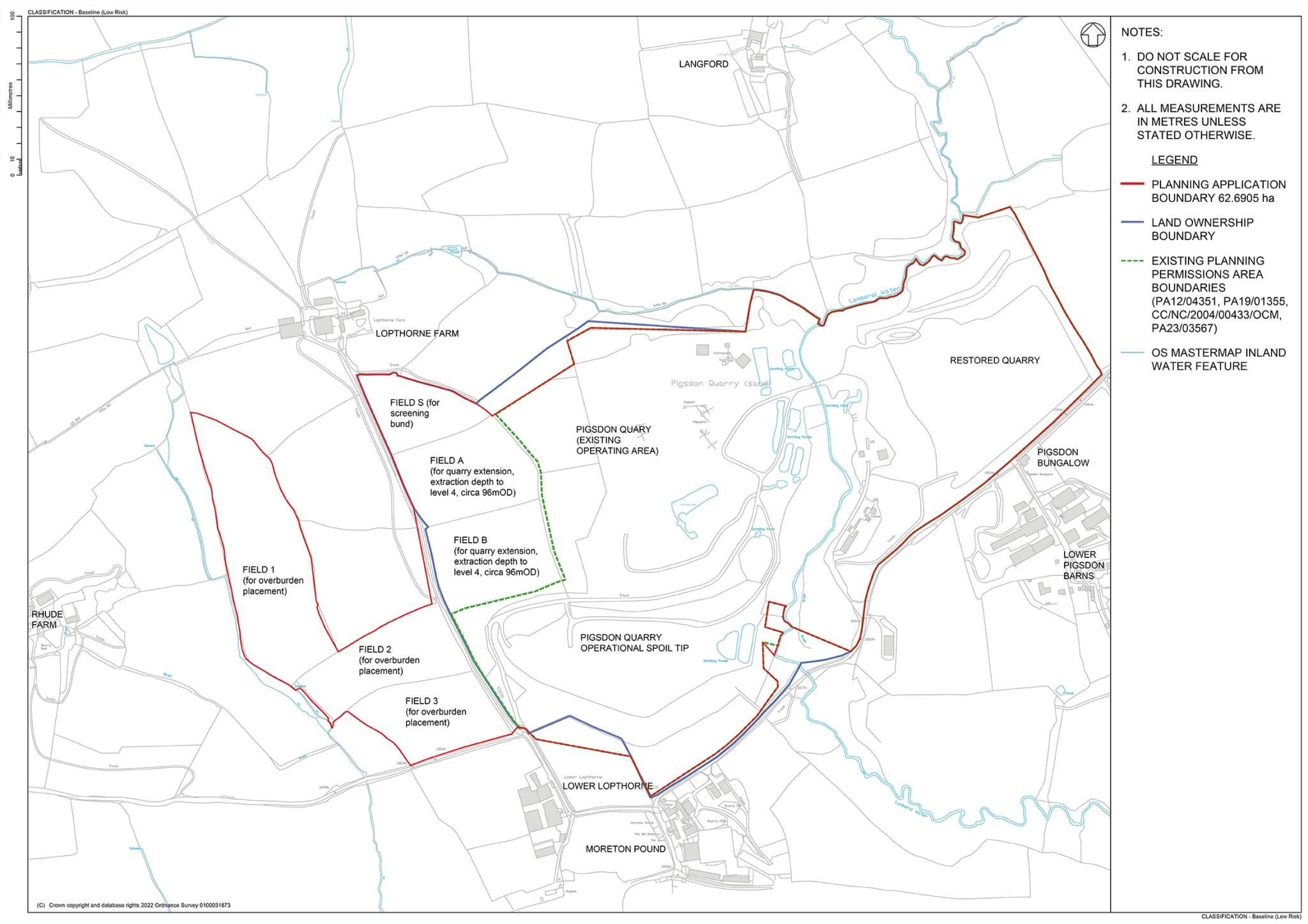Securing the Future of Pigsdon Quarry
History of Pigsdon Quarry
The area in which Pigsdon Quarry is located has been quarried for over 100 years. The planning history of the site dates back to 1948. Prior to Glendinning’s ownership of the Quarry in 2010, the quarry was known as Penhill Quarry. Since 2010 Cornwall Council has approved a number of separate extensions to both the mineral extraction area and the spoil tip, as shown on the planning history plan. The most recent large extension of the quarry was approved in 2013.
In September 2023 planning permission was granted to extend the footprint of the spoil tip by 0.5ha on an area of land immediately to the south of the existing tip.
Current Situation at Pigsdon Quarry
Currently, Glendinning undertakes a number of operations at Pigsdon Quarry including the following:
- The gritstone is released through a strictly controlled and monitored blasting and mechanical extraction programme.
- The extracted mineral is processed through mobile plant in the western void.
- Processing consists of a combination of crushing and screening to produce a range of products.
- Materials are stockpiled on the quarry floor.
- Products are then transported from the west to the eastern side of the Lamberal Water for further processing and/or onward sale.
Reasons for the Proposed Extension
Glendinning wishes to extend the mineral extraction area at Pigsdon Quarry for two purposes:
- Firstly, the extension area will provide additional land space to temporarily hold the processing area and stockholding which will free up extraction areas within the consented quarry for deeper levels to be reached there. The two proposed extension fields will also be used for temporary storage of non-saleable shale spoil once the top levels have been extracted. Once the non-saleable shale spoil has been backfilled into the quarry void as restoration, deeper mineral extraction of the extension area will take place if there is the market demand.
- Secondly, by extending the extraction area, further reserves of high specification PSV gritstone can be utilised and will therefore extend the life of the quarry.
At the current sales, the proposed extension would give the quarry an additional circa 40 years of mineral reserves beyond the current permitted mineral extraction area. Without the proposed extension area, the quarry will only be able to operate for approximately 5-6 more years due to lack of space for the processing area and stock holding, which in turn would sterilise important mineral reserves.
The proposed extension will ensure that Cornwall and Devon remain relatively self-sufficient in this important aggregate, with lower levels of imports and exports than many other counties, thus helping to reduce the distances that the aggregate is transported by road.
The quarry industry belief is currently that the replenishment of extracted material through the planning process is falling behind which is critical to the delivery of all construction projects and the Government ambitions to meet infrastructure, housing and other service needs. This has been confirmed by a recent article in the Quarry Management Journal. Therefore, it is important to ensure that there is the required provision and supply of aggregates and provide confidence that primary reserves are replenished. The proposed extension to Pigsdon Quarry is extremely relevant to addressing these concerns.
The Proposals
The proposed development to extend the quarry’s mineral extraction area include:
- Two extension fields, currently grassland (Fields A and B) (approximately 48,000sqm).
- A field to the north of the extension fields for a landscape and noise screening bund, currently grassland (Field S).
- Three agricultural grazing fields to the west of Lopthorne Lane for placement of overburden sub-soils (Fields 1, 2 and 3) (approximately 87,000sqm) then restored to agriculture use.
- Diversion of overhead power lines underground.
- Hedge translocations (the hedgerow between the consented and extension extraction areas and the hedgerow between Fields 2 and 3 in the overburden fields).

